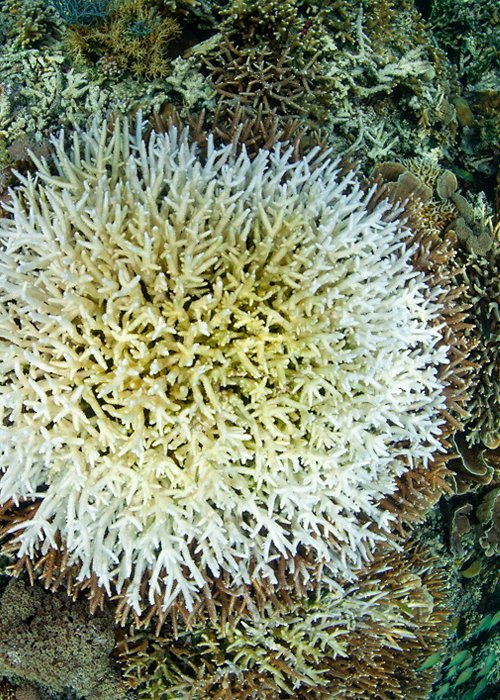The abnormal ocean temperatures of recent months are on the verge of triggering a coral bleaching event of unprecedented magnitude. It could affect the entire Southern Hemisphere and exceed the 2014-2017 event in intensity and impact. The warning comes from the US National Oceanic and Atmospheric Administration (NOAA), which monitors the health of the world's coral reefs.
Coral bleaching is a phenomenon directly linked to rising ocean temperatures. High temperatures stress corals, causing them to expel the algae that live within them and are vital to their survival. The most visible effect is the loss of colour caused by the expulsion of algae. The effects extend beyond coral reefs, affecting oceanic ecosystems, fisheries and tourism-dependent economies. Coral reefs support around 25% of marine species, including at least 4,000 species of fish. The collapse of coral reefs can therefore have cascading effects on other ecosystems and lead to declining populations of many marine species.
The previous global coral bleaching event from 2014 to 2017 resulted in significant coral loss, with the Great Barrier Reef alone losing almost a third of its corals. During the last mass coral bleaching event, it's estimated that on average 15% of coral reefs died, while a much higher percentage suffered damage. That event occurred at lower ocean temperatures than today, leading NOAA scientists to speculate that this year's impact on the reefs could be far more severe. To declare the fourth global mass coral bleaching event, widespread bleaching must occur in the Atlantic, Pacific, and Indian Oceans. Scientists use sea surface temperature data and satellite imagery to assess the extent of bleaching. Although the technical criteria for declaring the fourth mass bleaching event have already been met, final confirmation is awaiting observations from the Indian Ocean. Field surveys, including aerial surveys of the Great Barrier Reef, are underway to assess the extent of the bleaching and determine necessary conservation measures.





